STUDENTS PROJECTS
PROJECTS2013
08 January, 2014
The archaeological museum of Ancient Messene and the architectural configurations of the archaeological site
The scope of our dissertation was the development of a new archaeological museum in order to highlight the importance of the archaeological site.
Students: Panagiota Kontaridou, Panagiota Batalia
Supervisors: Eleni Amerikanou, Panos Exarchopoulos, Dimitris Loukopoulos
Democritus University of Thrace
Submission date: November 2013
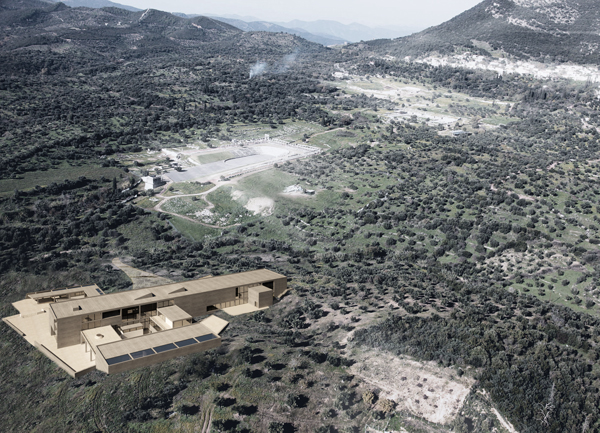
Our dissertation concerns the design of a new archaeological museum in ancient Messene, located in the county of Messenia. The existing museum is inadequate, as when it was built back in 1973 in the village of Mavromati was intended to house the 270 archaeological findings which today run up to about 17 thousands, with a crowded warehouse.
Consequently, the construction of a new museum is indispensable in a place with constant development and traffic.
Ancient Messene constitutes one of the most important cities of the Hellenistic and Roman times in terms of size, shape and maintenance. Except from the sacred and public buildings it is well-known for the imposing fortifications, dwellings and burial sites. It has the rare privilege of not having covered from recent housing estates and being located in a predominantly Mediterranean untouched natural environment.
Ancient Messene protected from the northeast as a natural wall the Mount Ithome. The rest of the city was surrounded by walls at a length of about 9,5 km some of which have survived until today. The route is as follows: just before Mavromati, the visitor passes through the Arcadian gate, a circular fortification tower. Then he meets the existing museum and heads downhill to the archaeological site.
The first monument of the site is the Theatre. It was used for mass political gatherings. From the Agora complex the great north portico has survived. In the center of the Agora is the church of Messene. Between the theatre and the Agora, the Arsinoe fountain was revealed. Pausanias presents the Asclepieion as a museum of art, mainly for sculptures and not as an ordinary mosque for patient treatment. NE and East of Asclepius on the road, came to light densely built residential complex, which is part of the settlement of the 5th and 7th century AD. The stadium and the Gymnasium are among the most impressive, in terms of conservation building complexes. The Memorial Stadium is a mausoleum for members of prominent families of the ancient city.
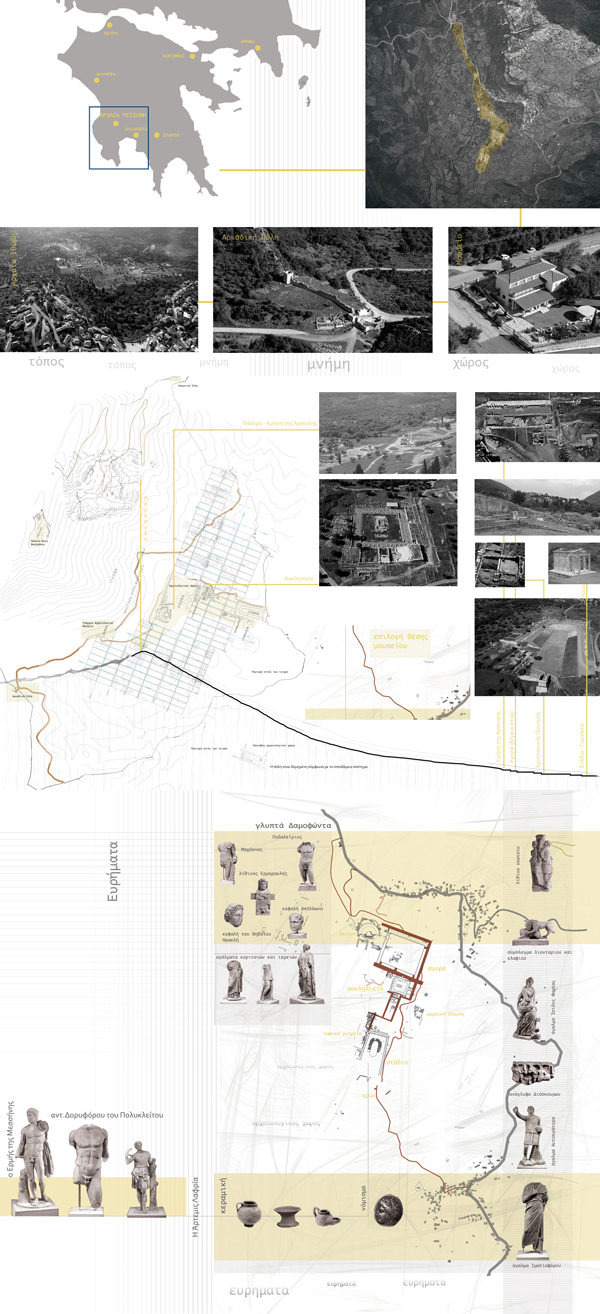
The archaeological company began systematic archaeological excavations in the ancient Messene since 1895. From 1986 until today, Petros Themelis runs the excavations. We categorized the findings depending on where they were found based on information given to us by the archaeologist in charge. This results in the following: Damophon was the greatest Messenian sculptor of the mature Hellenistic Period in southern Greece. Almost all the sculptures of Asclepieio were Damophon's works.
The excavations brought to light three of the most important statues:
The marble statue of Hermes.
The satellite of Messene.
The type of Artemis Laphria.
The archaeological site is located between the villages of Mavromati and Arsinoe. There is access of the site from the village of Mavromati. The choice of the site for the new museum was based on:
The location of the museum outside the ancient city walls.
The museum's reference in the archaeological site
The need to create a second access in it via the existing road network.
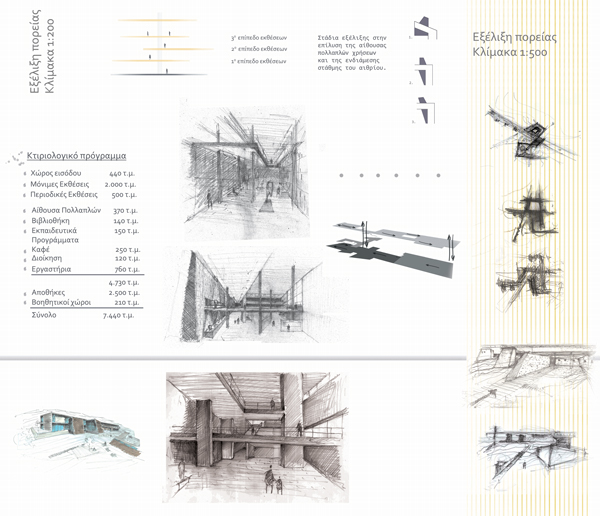
Our basic synthetic idea was to create a volume that overrides the hill and constitutes the bulk of the reports while the rest of the other functions based in a lower level, are structured complementary in this. The aim was the creation of an atrium referred to the building, with a more introverted character. The entrance is formed by a process that some walls define as traces in the soil and leading up to it. The walls are simultaneously creating space for the laboratories to operate as an independent unit with its own expansion. During the development of the solution we created the building program. After our discussion with the archaeologist we concluded that our permanent exhibitions mainly require living space of approximately 3,000 square.
Thus, we tried to set up a museological concept for the permanent exhibitions as the core of the museum. We considered it more comprehensible and interesting for the visitors to integrate the findings into sections, just like they would encounter it in the course of the archaeological site eg Hall Theatre. Damophon's sculptures hold separate section and position. The projections acquire more vital areas for permanent exhibitions as in these are exposed to the 3 most important statues.
In the basic motion path in the exhibition two extra levels are introduced that aim to offer a variety in this linear evolution. The entrance is placed at the beginning of the course of the permanent and at the hub in relation to the other functions.
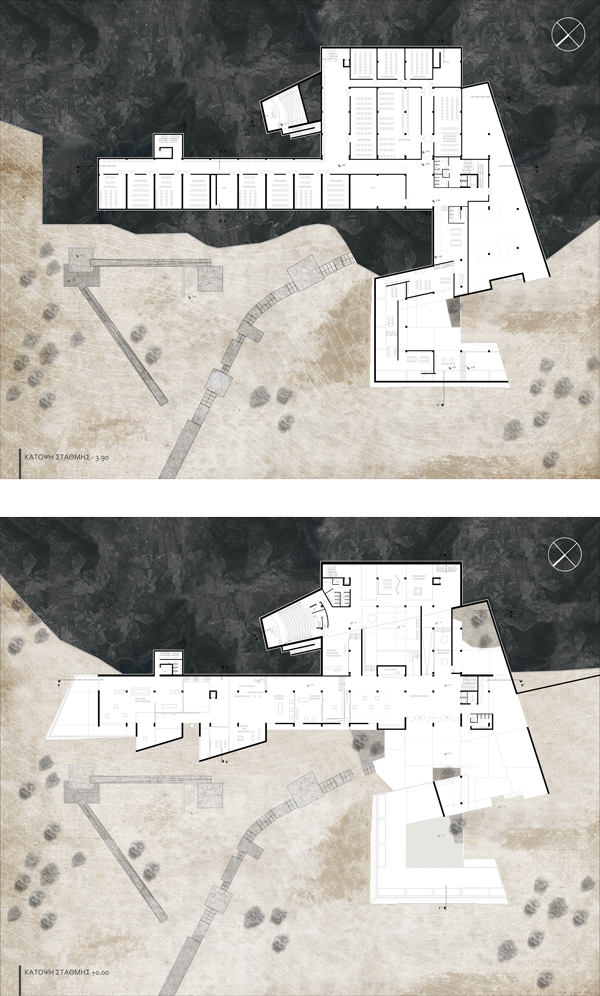
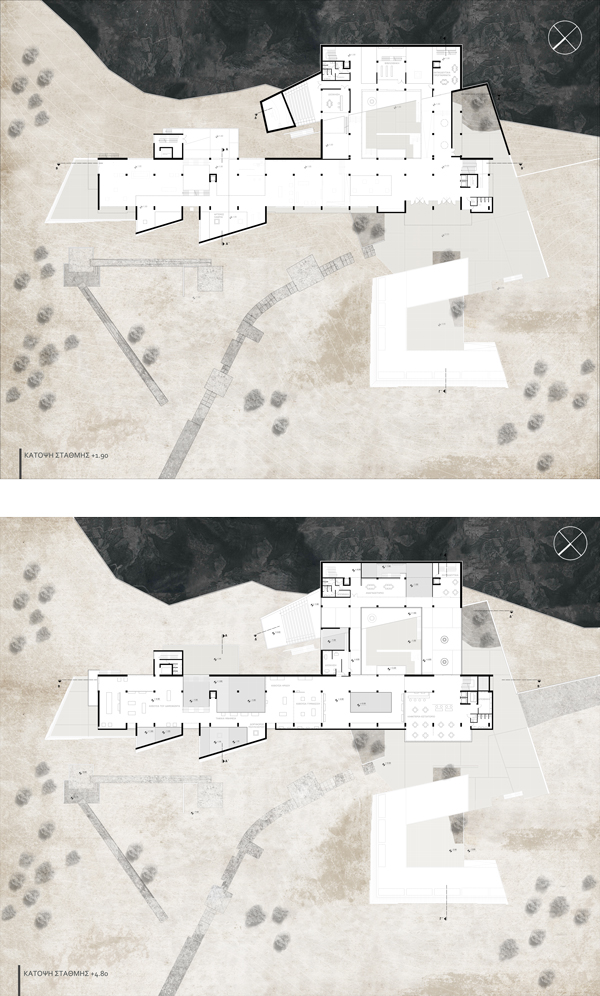
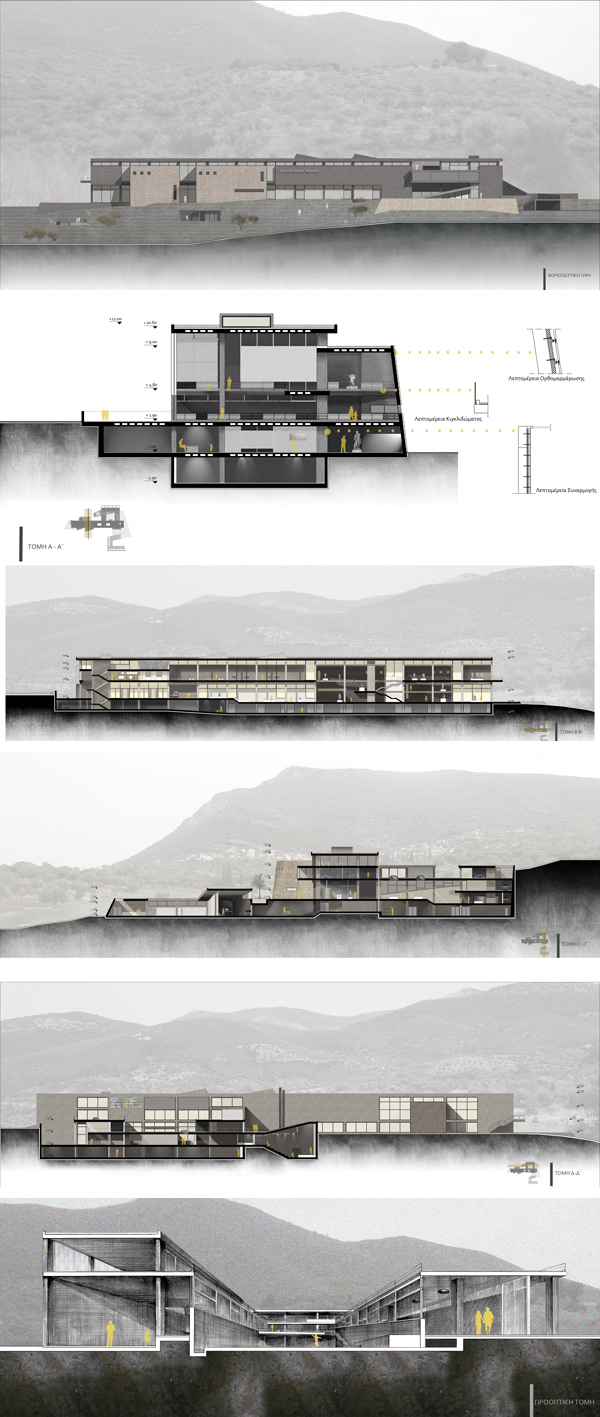
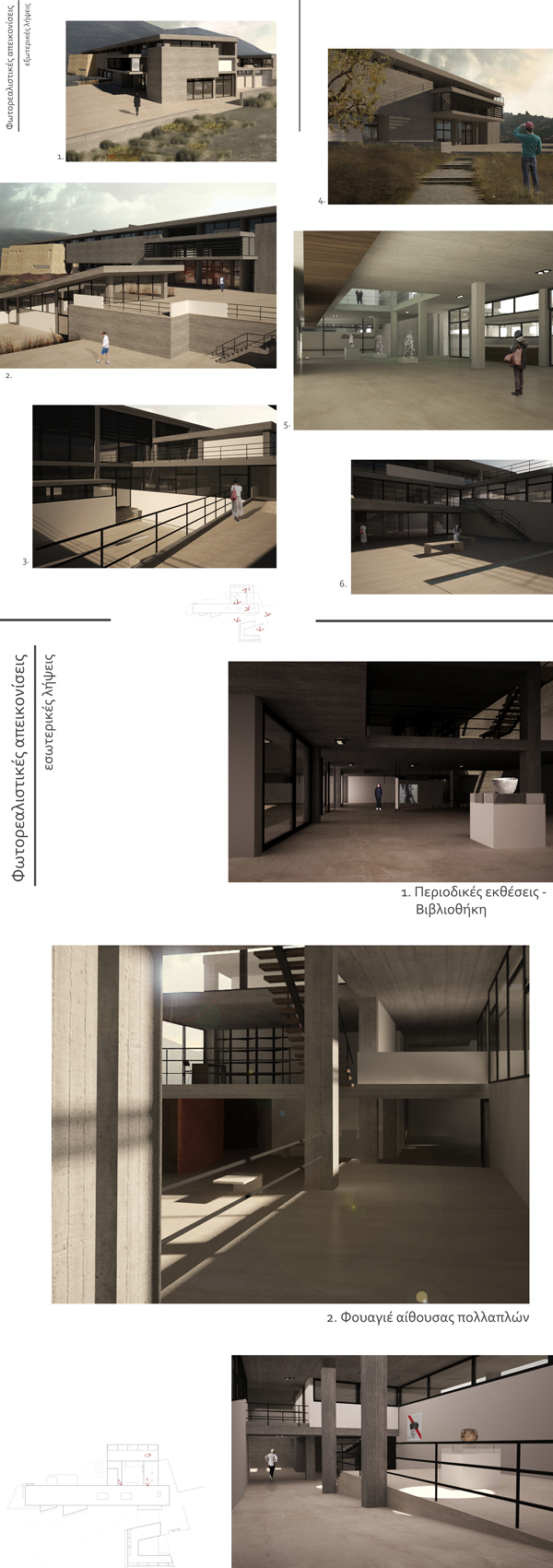
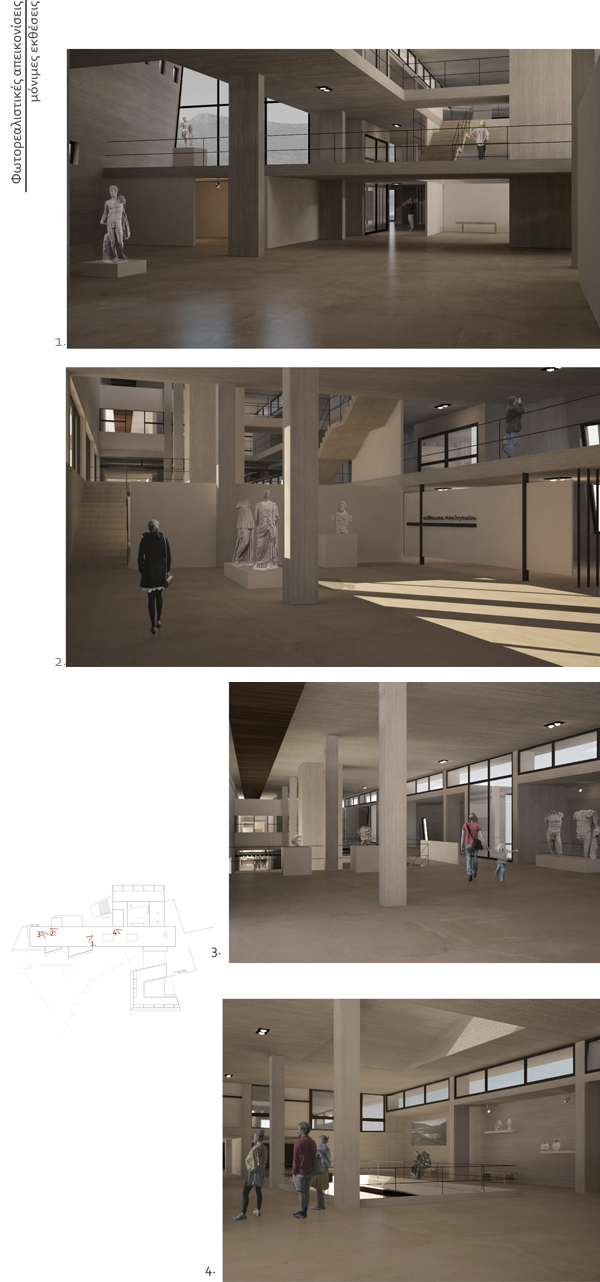
As part of the museum design we suggest and some mild configurations at the archaeological site that aim to connect the route with the museum. At the middle and at the end of the route we suggest some shelters for stasis and view towards the archaeological monuments and archaeological museum.
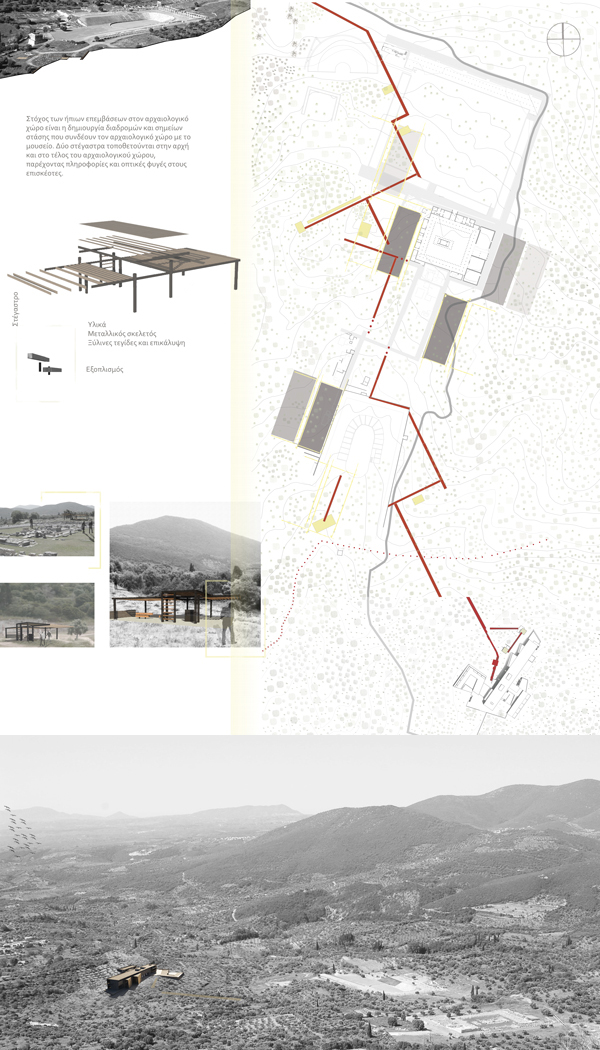
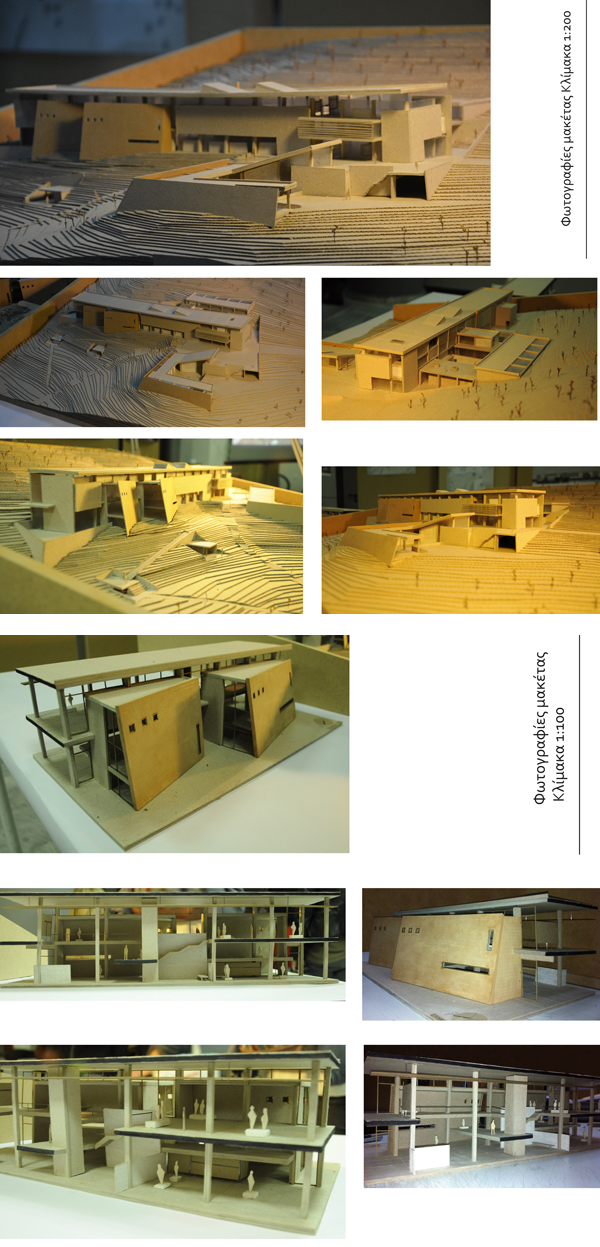
Related articles:
- DESTROY below the ACROPOLIS - VIDEO ( 13 November, 2007 )
- Architectural cannibalism in Athens ( 23 July, 2009 )
- The Acropolis Museum: An Unhappy Fit ( 08 June, 2010 )
- The New Acropolis Museum: A Triumph of Sophistry ( 21 September, 2009 )
- Αrchitectural competition ( 13 March, 2009 )
- D. Areopagitou 2008: reformation competition of the rear views of historic buildings towards the new Acropolis Museum ( 25 July, 2011 )
- New Acropolis museum ( 06 January, 2013 )
- All about fish ( 14 February, 2013 )
- New Acropolis Museum (NAM) ( 07 October, 2013 )
- Redefining Leftovers ( 05 April, 2014 )
- Theatre complex at Koukaki, Athens ( 20 January, 2014 )
- Reformation and rehabilitation of an inactive quarry, with spatial location of uses for Tourism, Recreation and Environmental Education ( 10 February, 2014 )
- Cultural center of Glyfada ( 23 February, 2014 )
- Environmental Center and Cultural Center in Kaiafa’s Lake ( 21 March, 2014 )
- The rack railway museum at Vouraikos gorge ( 18 April, 2014 )
- Museum of underwater antiquities in Chios ( 01 June, 2014 )
- Archaeological museum in Astypalaia ( 03 November, 2014 )
- Art multiplex in the Customs Office area in Palaia, Volos ( 24 February, 2015 )
- Diploma projects exhibition museum of school of architecture ( 02 March, 2015 )
- Lighthouse Museum in Andros ( 20 April, 2015 )
- Archaeological Museum for the Neighbourhood of Plato’s Academy ( 15 April, 2015 )
- Palazzo di Lorenzo’s Museum in Sicily ( 15 May, 2015 )
- New Archaeological Museum of Delos ( 19 July, 2015 )
- Archaeological Museum of Eleftherna ( 01 September, 2015 )










